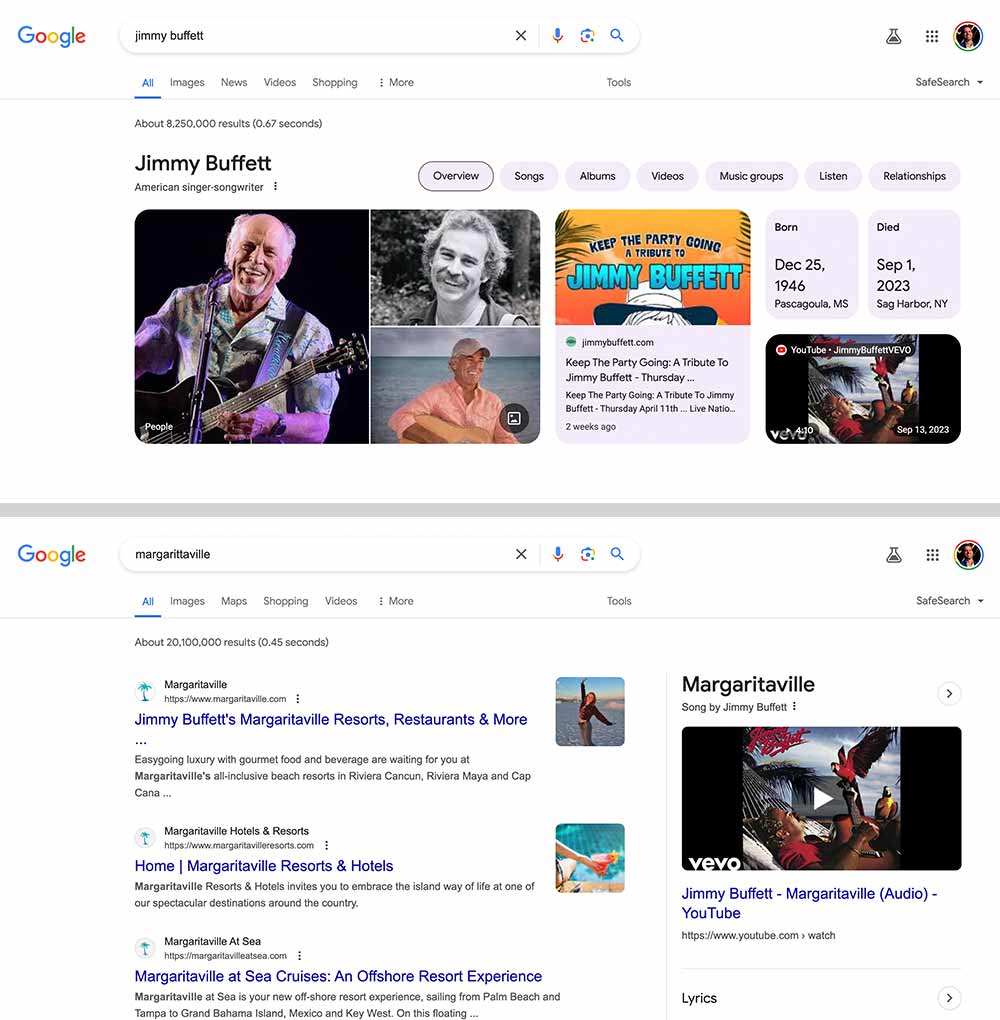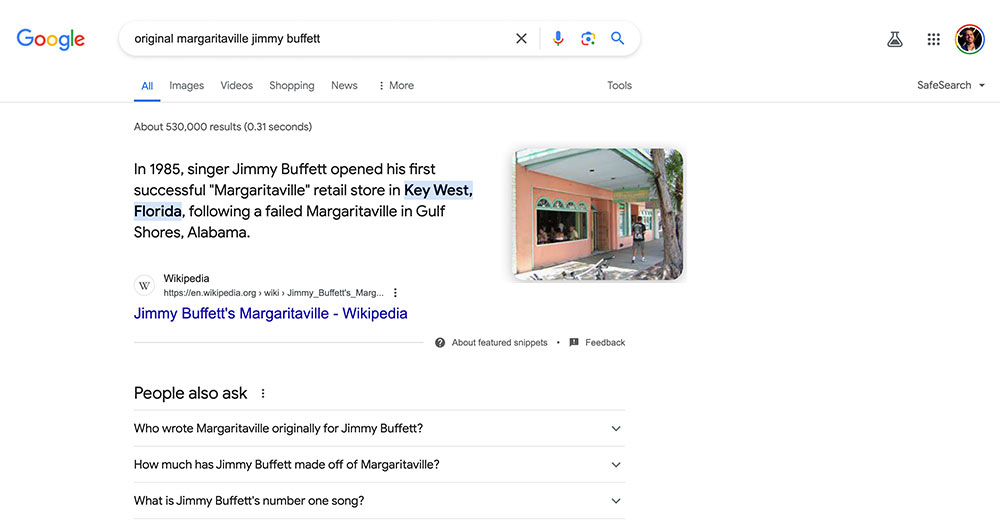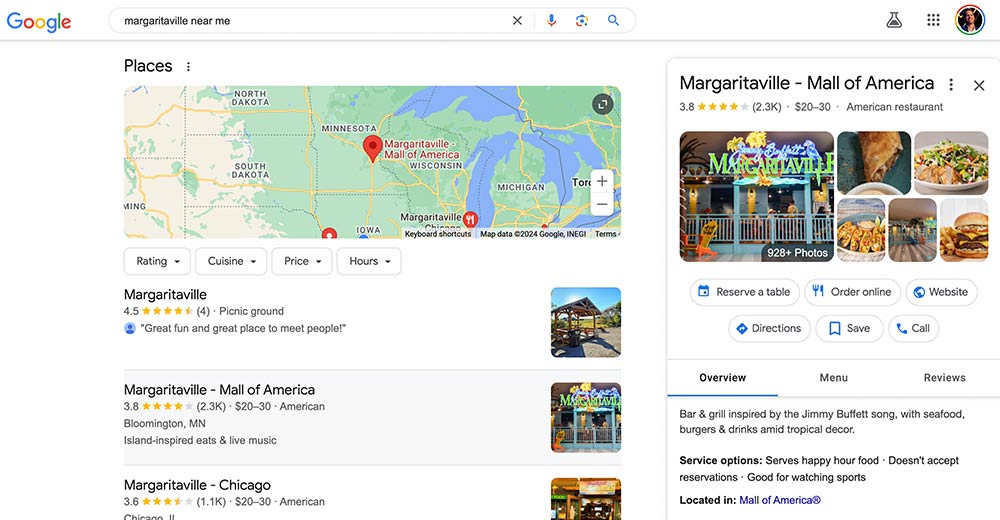6 Ways To Increase Brand Visibility & Awareness Through SEO
Google gives brands no more than 250 characters to woo an audience in search: a compelling meta title to capture attention, along with a concise description to demonstrate industry expertise.
To put it into perspective, the heading above is 59 characters, while the first paragraph is 191 characters. Just like that, we’ve used up 250 characters. And within that limited character count, you have to speak to two audiences. First, to ensure brand visibility, Google bots have to be able to understand your content so they know when and where to rank it in response to search queries. Second, when Google ranks your content, you have to consider what will get a user to trust your brand over a competitor’s.
It’s a lot to accomplish in such little space, but search engine optimization (SEO) and brand awareness efforts can be used to amplify each other. As an SEO-first digital marketing agency, Blue Compass has successfully found multiple ways to strategically increase brand awareness through SEO, generating more leads and conversions than ever before.
How Do You Build Brand Awareness Through SEO?
SEO brand building involves an understanding of your audience and your industry as a whole. What are users searching for relating to the goods and services you offer? How are competitors positioning their brands to rank in search and relate to potential customers? By answering these questions, you’re better equipped to start generating brand awareness through SEO. Here’s how to get more eyes on your brand in search:
- Integrate SEO brand-building keywords your customers are using to find similar products and services
- Elevate your SEO and brand awareness through content marketing
- Create a responsive user experience for consistency across devices
- Optimize assets for brand visibility & web performance
- Build your brand’s prominence in local search
- Incorporate an internal linking strategy
1. Identify SEO Brand-Building Keywords Used By Customers Seeking Services In Your Industry
Whether you’re adding a new service to your offerings, consolidating businesses or rehauling your brand altogether, remember to be intentional about the words you’re choosing in your messaging. If you’re introducing a new product or service, researching keywords using paid tools like SERanking or free platforms like Google Trends can help narrow down the phrases associated with your new business offering.
Perhaps internally your team refers to your new branch as a pastry shop, but keyword research reveals “bakery” is the term most commonly searched for in your industry. When you launch your new product or service with a branded name incorporating audience-based keywords (in this case, bakery), you gain the recognition of Google and increase brand visibility. Potential customers now associate this product or service with your business and brand identity.
With that said, don’t sacrifice creativity to fit keywords into your brand messaging—just do your due diligence to ensure you’re not shooting yourself in the foot. Try entering your ideas into Google to see what results come up currently.

For example, a search for singer Jimmy Buffett yields many results related to the singer’s career. Imagine if his well-known Margaritaville restaurant chain was named after him: any search for a restaurant with his name would be overpowered by content related to the singer himself. “Margaritaville,” on the other hand, pays homage to Jimmy Buffett while maintaining a distinct identity easily discoverable in search results. You don’t want to be crowded out of the search results for your own brand name, so be sure to know what’s out there before you launch your new identity.
2. Consider How Content Marketing Can Elevate Brand Visibility
Content marketing is a major opportunity for your brand to showcase the principles of experience, expertise, authoritativeness and trustworthiness (EEAT) in action. Through content like blog articles, news updates, infographics and social media campaigns, you can establish your business as a leading resource for your industry. The most successful content pieces answer the questions your audience is asking. That’s because creating truly compelling content is less about what’s in it for your business and more about what readers gain from your expertise.

Google is a great resource to discover what topics are relevant to your audience right now for effective SEO brand building. When exploring various keywords to improve brand visibility, take notice of the featured snippets and People Also Ask (PAA) callouts Google features alongside organic results. These are known as rich results, which Google features more prominently in search based on the content it deems most relevant to the user. By optimizing your content to concisely resolve the search query or question the user has, your brand has a good chance of taking over a rich result, immediately showcasing your credibility and prominence as a trusted brand.
3. Make Sure Your Brand Is Responsive On All Devices For Better SEO & Brand Awareness
Whether your brand is B2B or B2C focused, achieving brand awareness through SEO requires consistency both for your messaging and for your visual assets. In an era where more individuals are working from home and the lines between work and life aren’t as defined, people are plugged into multiple devices every day. For brands, this is an opportunity to reach customers more than ever, but only if your brand is consistent across all platforms.
Visual elements like your logo and design features should be easy to recognize from the perspective of a desktop computer, tablet or mobile device. If your logo distorts or pixelates on a desktop device or appears flattened on a mobile device, your brand loses recognition and credibility. Responsive brand design on your website allows your visual assets and content to adapt based on screen size, so users receive the full experience whether they’re on their computer or phone.
4. Optimize Assets For Brand Visibility & Web Performance
In addition to a responsive web design, your business should ensure the website uses visual assets that are optimized to load quickly and clearly on the web. Files exceeding 100KB on a website slow down page load speed, which is a ranking factor Google considers when judging the relevance of your content.
Consider the ramifications for SEO and brand awareness if your logo, arguably your brand’s most important visual asset, isn’t appropriately compressed before uploading it to your site. A brand’s logo is typically displayed prominently across multiple areas of the website. If every page has a clunky logo file delaying its load speed, Google isn’t going to consider your content very valuable for users who expect quick information at their fingertips. Online tools like TinyPNG enable marketing and web professionals to compress and convert image files into a more manageable file size for faster, more reliable web performance.
5. Lean Into Local Search For SEO Brand Building
Local SEO can be a game-changer for small businesses and brand visibility. A local focus appeals to a nearby audience looking for convenient services, improving your SEO and brand awareness within the corresponding region. SEO can certainly help you cast a wide net, but it can also help you reach a tailored customer base local to you. Along with general keywords, consider incorporating location-specific keywords (related to your region, community or proximity—i.e. “near me”) to help ensure your business tops local search results and is therefore top of mind for nearby customers.

While you can’t always predict how or even if Google will display your content, utilizing your local Google Business Profile (GBP) enables you to take control of your brand identity and how it appears in search. Google typically displays business profiles when users enter a highly localized search query or are seeking products or services in their area. Your brand can showcase information about your products and services and post content in real time to connect with users in your unique brand voice.
6. Lead Users Through Your Site With Internal Links For More Effective SEO Brand Building
When your SEO and brand awareness efforts are going well, you’ll gain visitors to your website, which presents a whole new opportunity for you to draw users into your brand. With an internal linking strategy, you can optimize or create new content to interlink across your website, facilitating the user’s journey through your site and telling the story of who your business is as a brand. Every blog article or service page is an opportunity to nudge users in the direction of a related service or resource to not only keep them on your site but also coming back for more.
Internally linking throughout your content helps round out your brand so users understand how your various products and services connect. Google also looks at internal links throughout your site to determine how content relates for ranking opportunities. Using internal linking to develop a full picture for your brand is an easy way to build your authority in the eyes of Google and establish goodwill for your future customers who appreciate your brand’s ability to anticipate their needs.
Get Started With Blue Compass For Seamless SEO & Brand Awareness Solutions
Curious about how to apply our SEO brand-building tips to your business? Blue Compass’ experts have mastered even more ways to increase brand awareness to help our clients show up and stand out in search. To get started curating brand awareness through SEO, contact our team of creative, strategy-oriented professionals ready to run with your brand and help you reach more customers than ever.